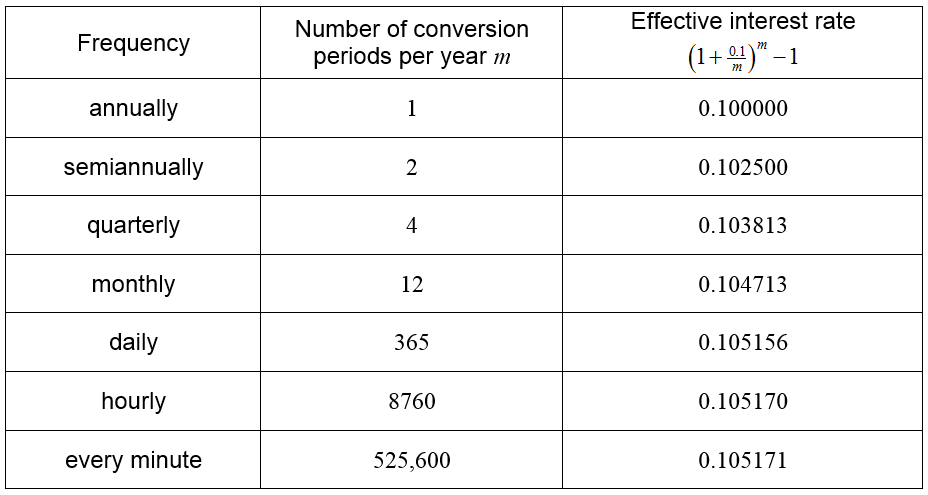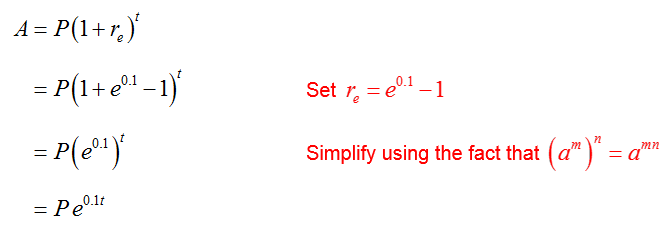What is continuous compound interest?
As the frequency of compounding increases, the effective interest rate also increases. We can see this by computing the effective interest rate at a specific nominal rate, say r = 0.1.
As the number of conversion periods per year increases, the effective interest rate gets closer and closer to 0.105171.
In fact, it is possible to show that the effective interest rate gets closer and closer to the value e0.1 – 1 as the frequency of computing increases. If this is done at a nominal rate of r = 0.1, the accumulated amount is
In general, as the frequency of compounding increases, the effective interest rate gets closer and closer to er – 1. We can express this symbolically by writing,
Think of the symbol → as meaning “approaches”.
Larger and larger values of m mean that we are compounding interest more and more frequently. When this happens, we say that the interest is term compounded continuously.
The future value FV of the present value PV compounded continuously at a nominal interest rate of r per period is
where t is the time in years.
Like the compound interest formula, this formula may also be written in several equivalent forms. In a biological context, the size of a population P with an initial amount of P0 growing at a continuous rate of r % per year over t years grows according to
In some business applications, an original amount of money or principal P grows to an accumulated amount A at a continuous rate of r % per year over t years according to
In each of these applications, some quantity is growing at a continuous rate r. The original amount of the quantity is multiplied by a factor of ert to yield the amount of the quantity at some later time.
Example 7 Continuous Interest
Third Federal Savings and Loan offers a CD that earns 1.79% compounded quarterly (on February 3, 2012). If $5000 is invested in the CD, how much more money would be in the account in 5 years if the interest is compounded continuously versus quarterly?
Solution The future value with interest compounded quarterly is
The future value with interest compounded continuously is
The future value with continuous interest is greater than the future value with interest compounded quarterly by
In general, compounding some amount continuously will always yield a larger amount than compounding the same amount at the same rate a finite number of times per year. The greater number of times the amount is compounded in a year, the closer the future value will be to the future value compounded continuously.




